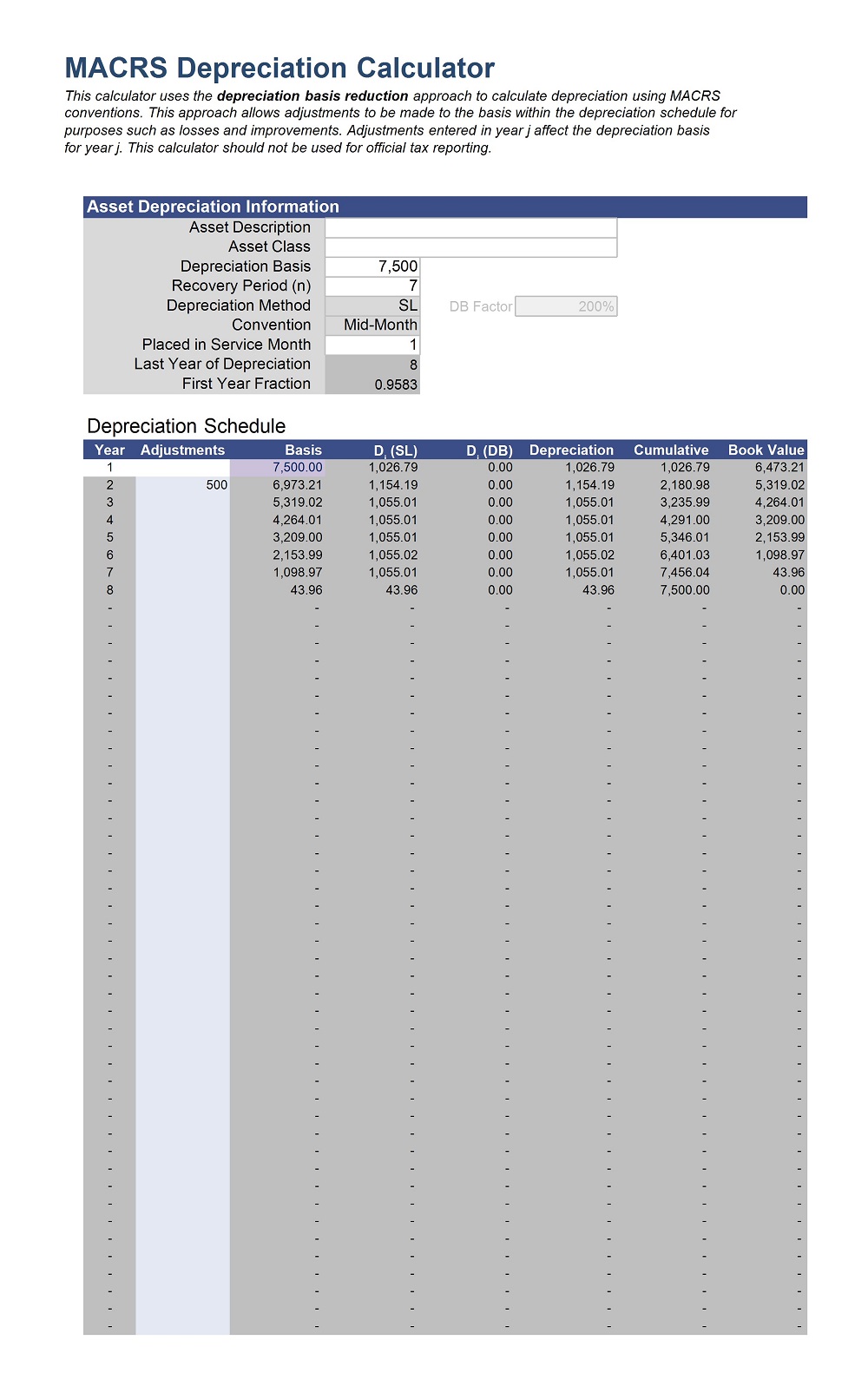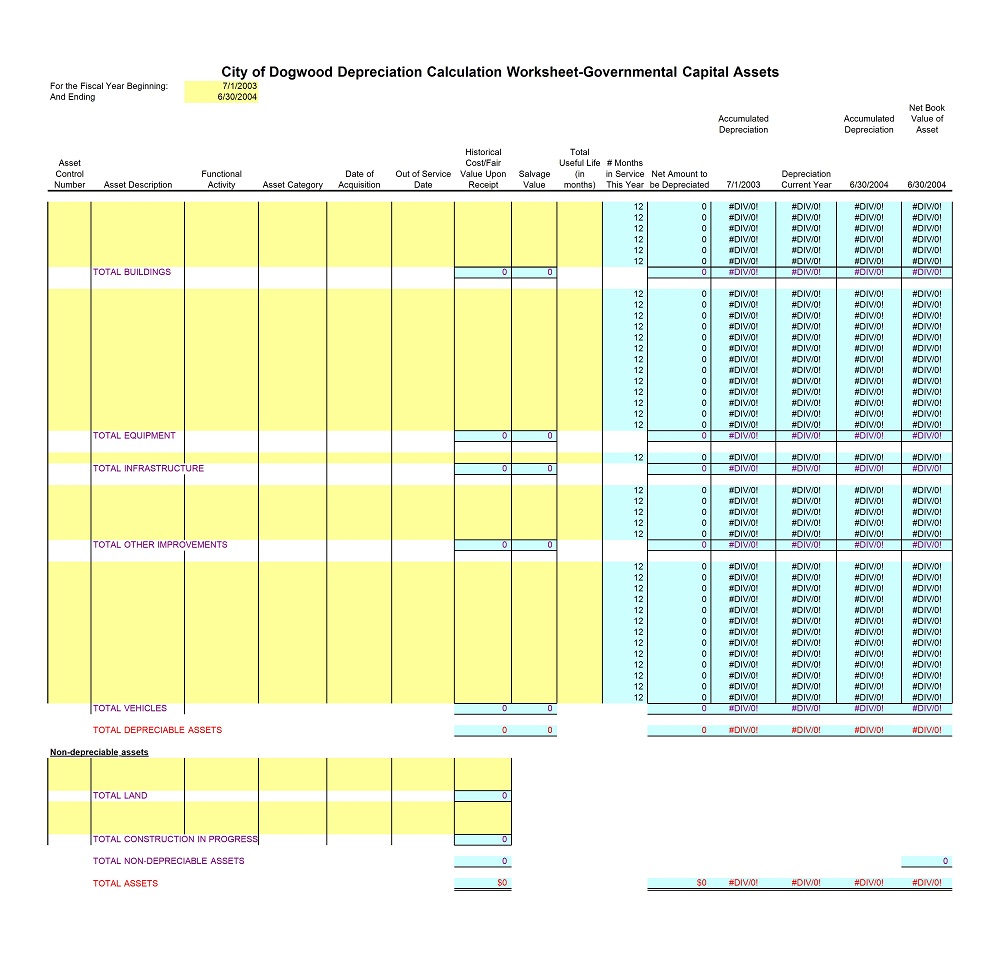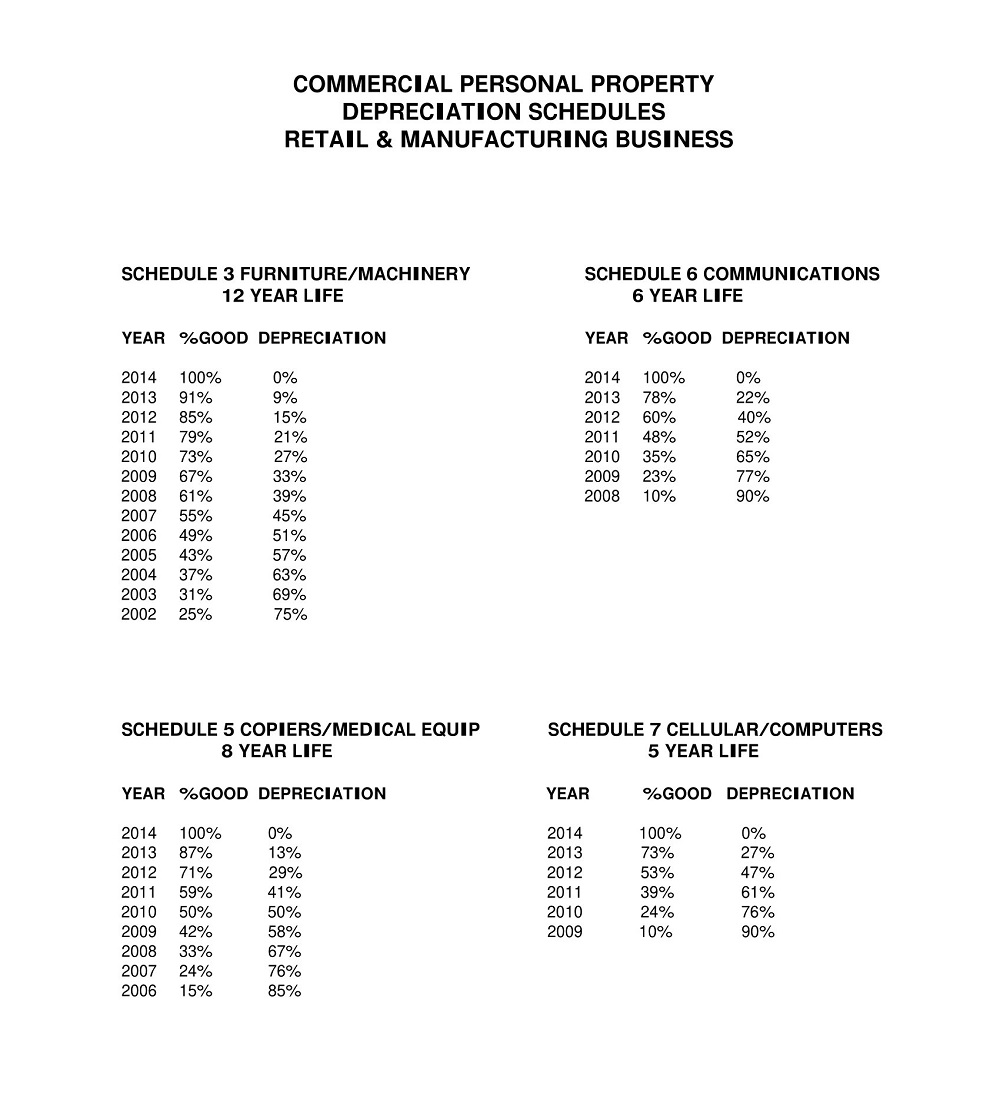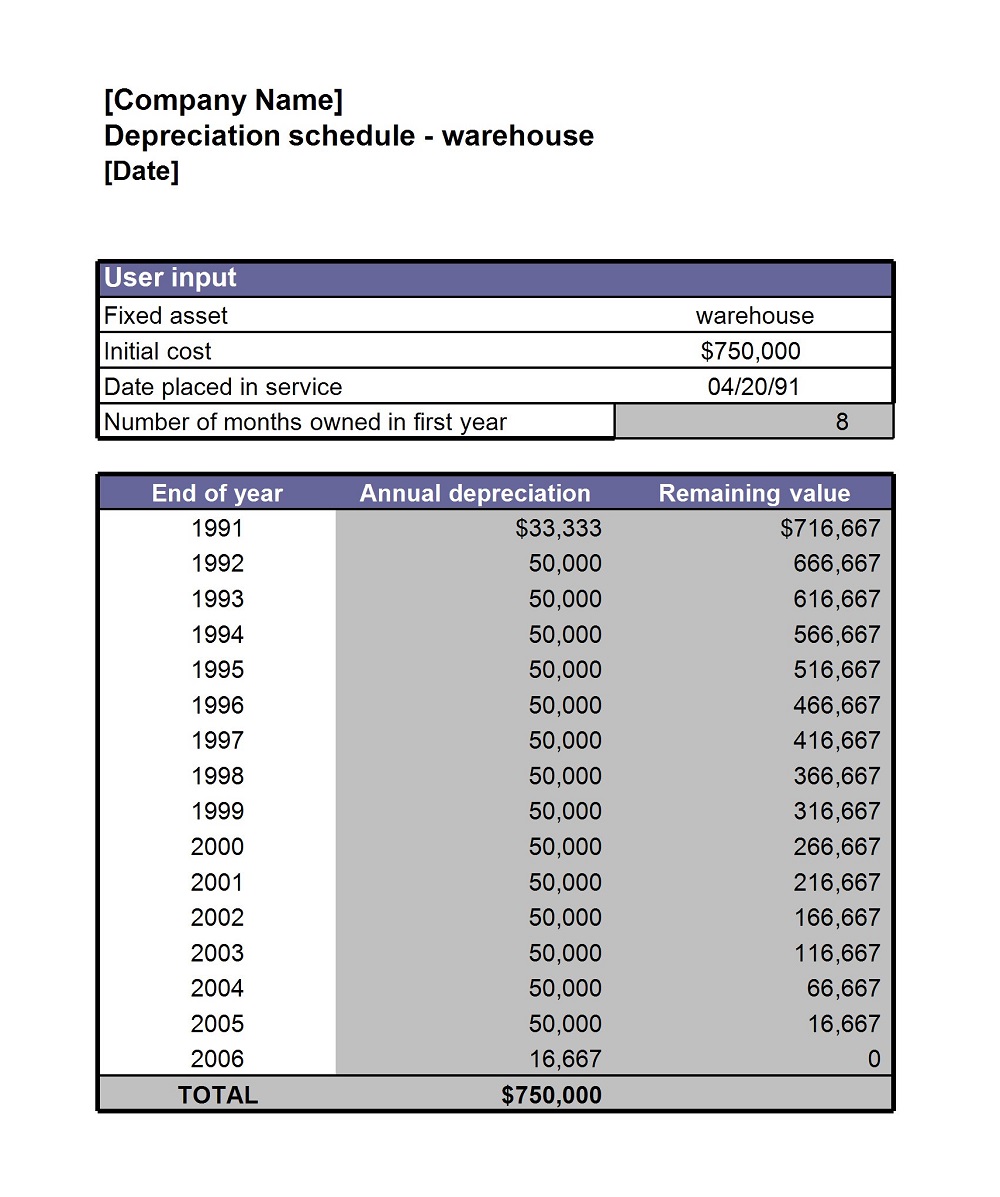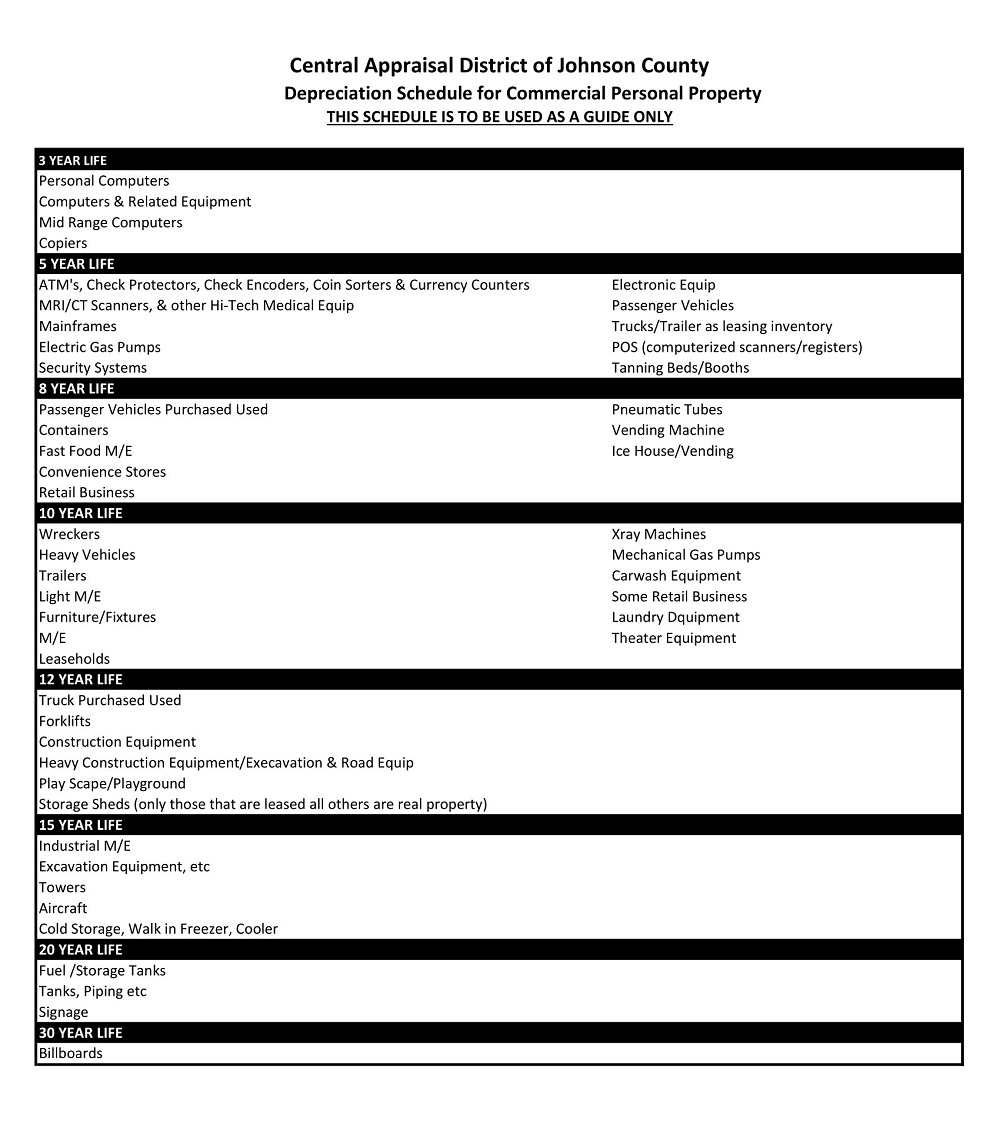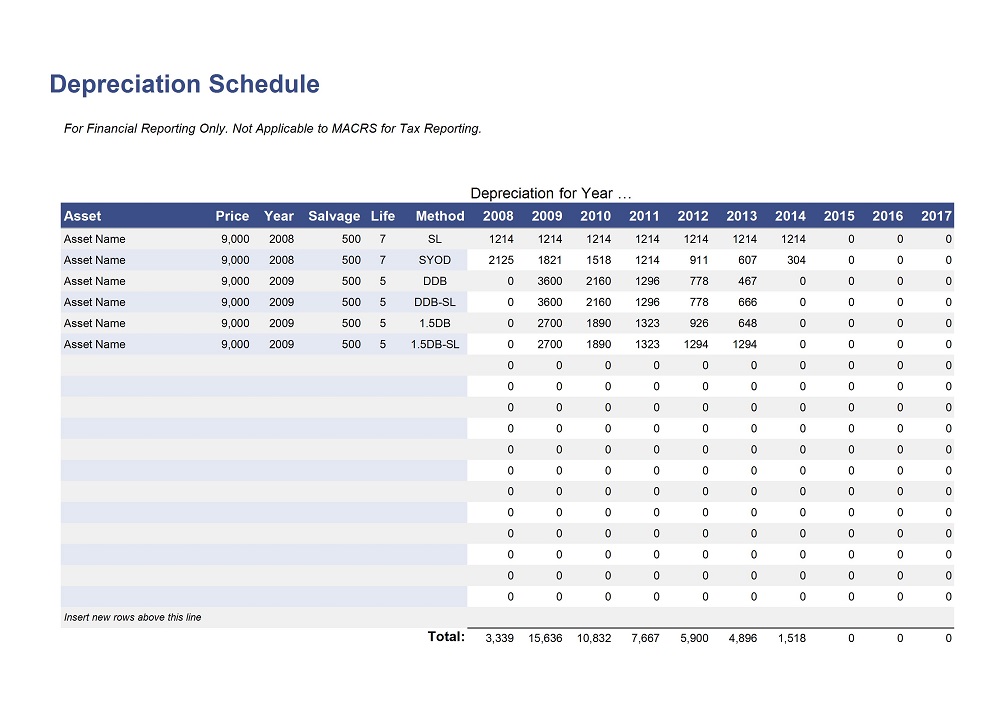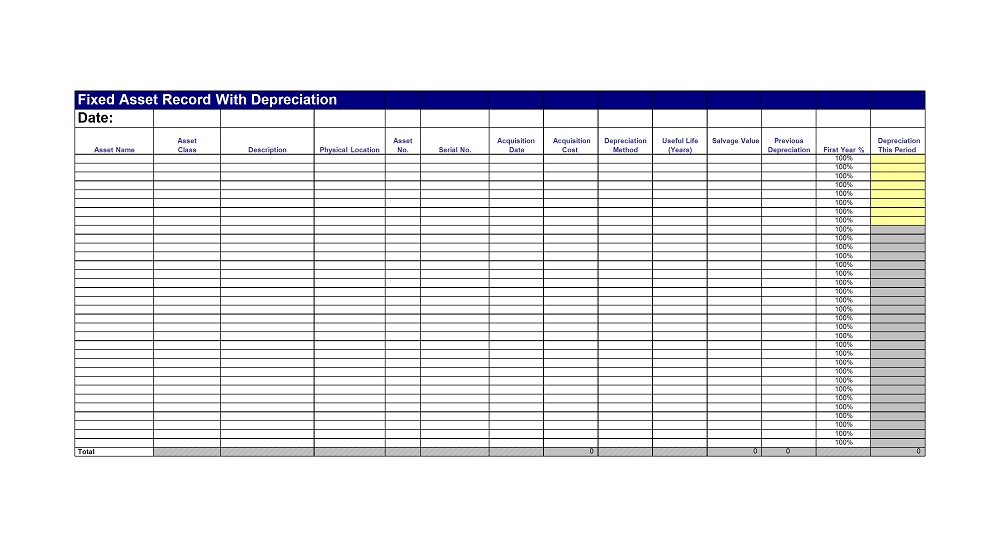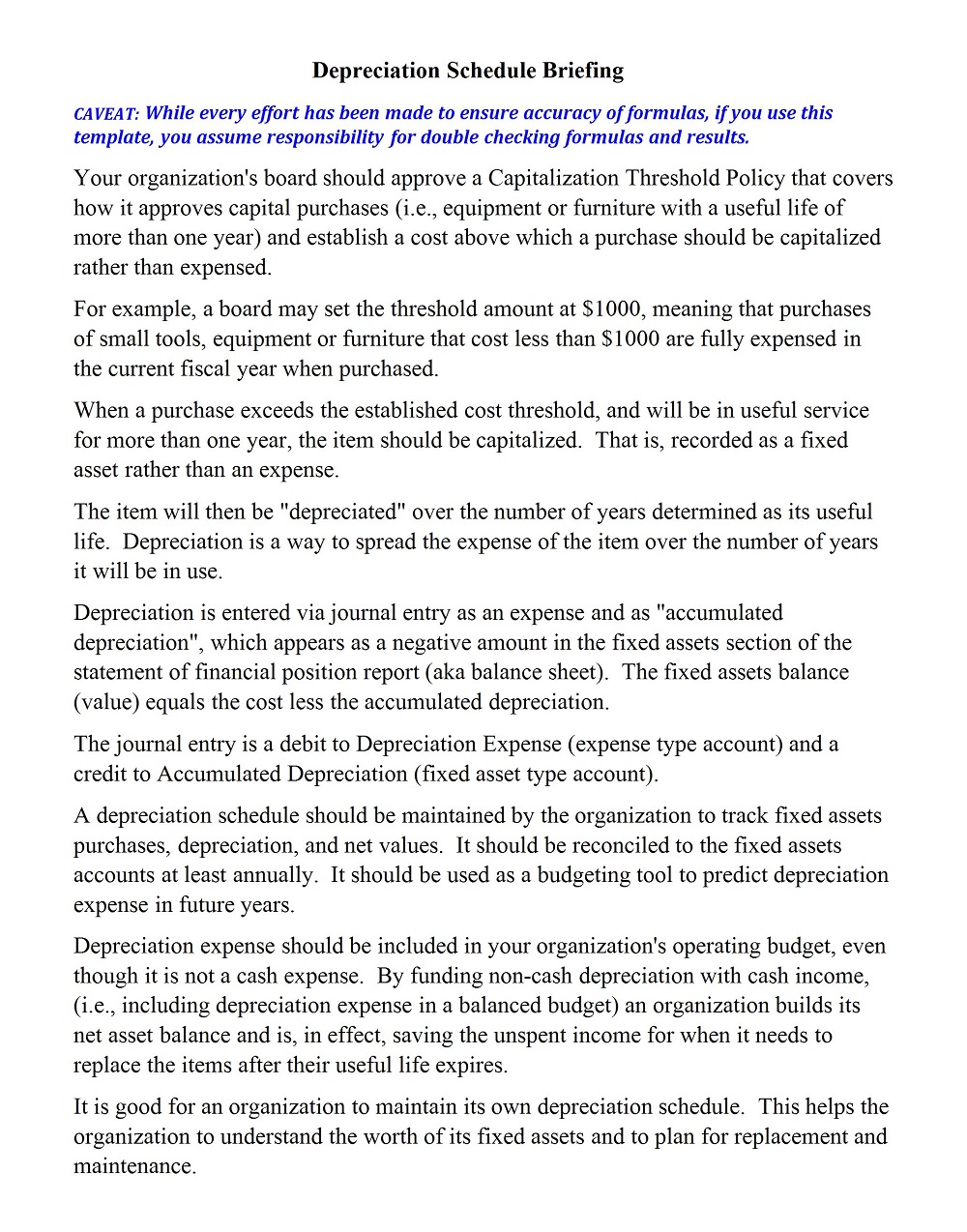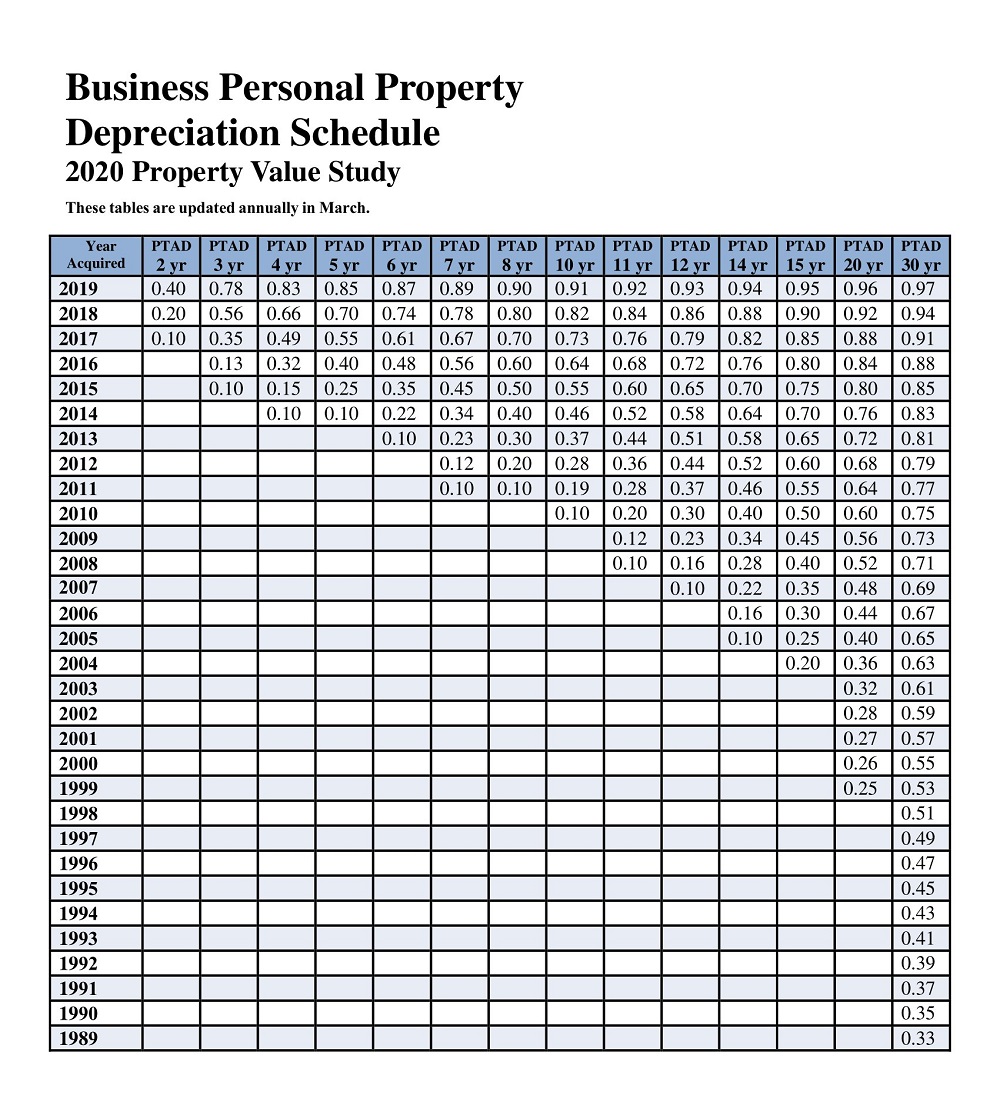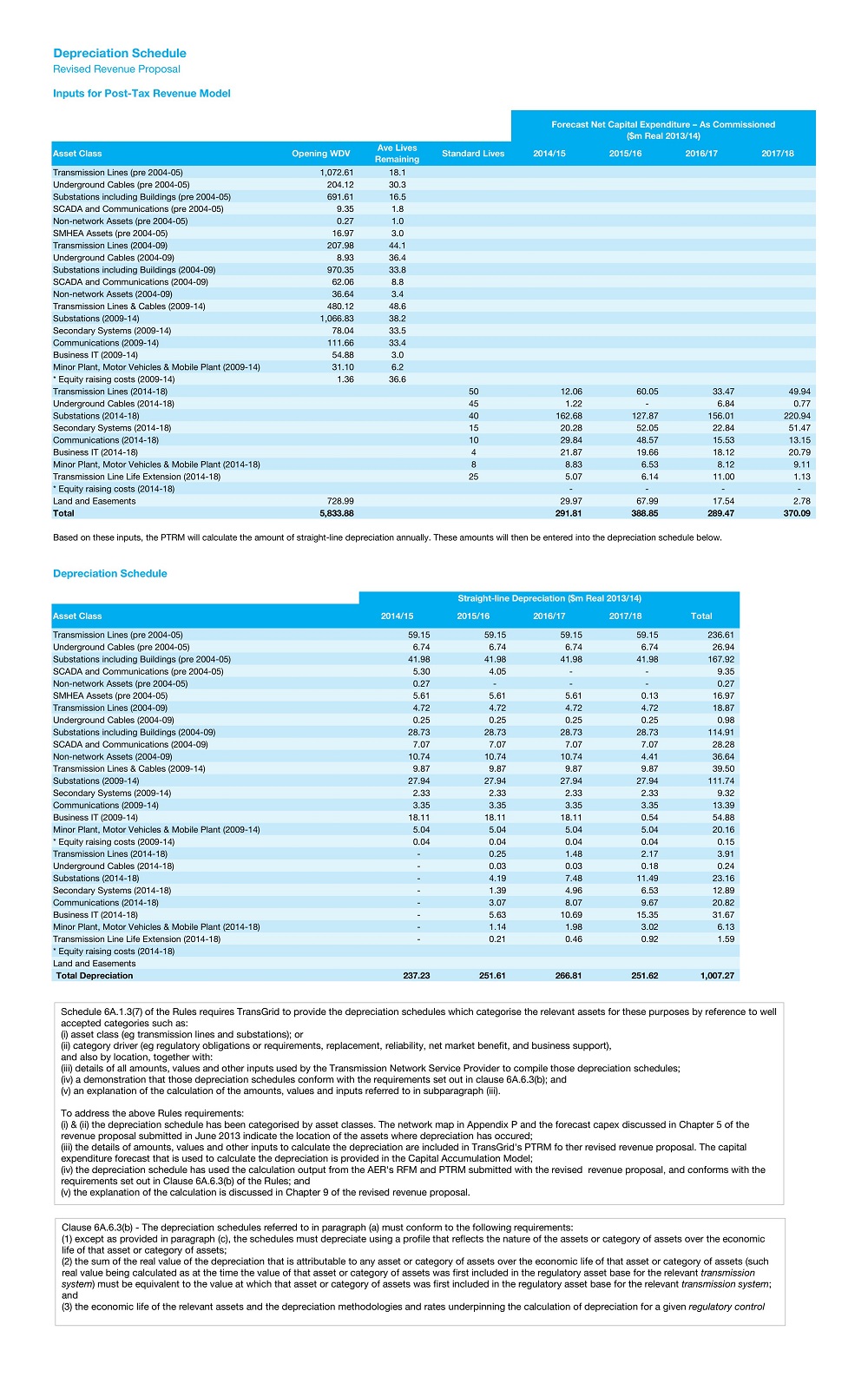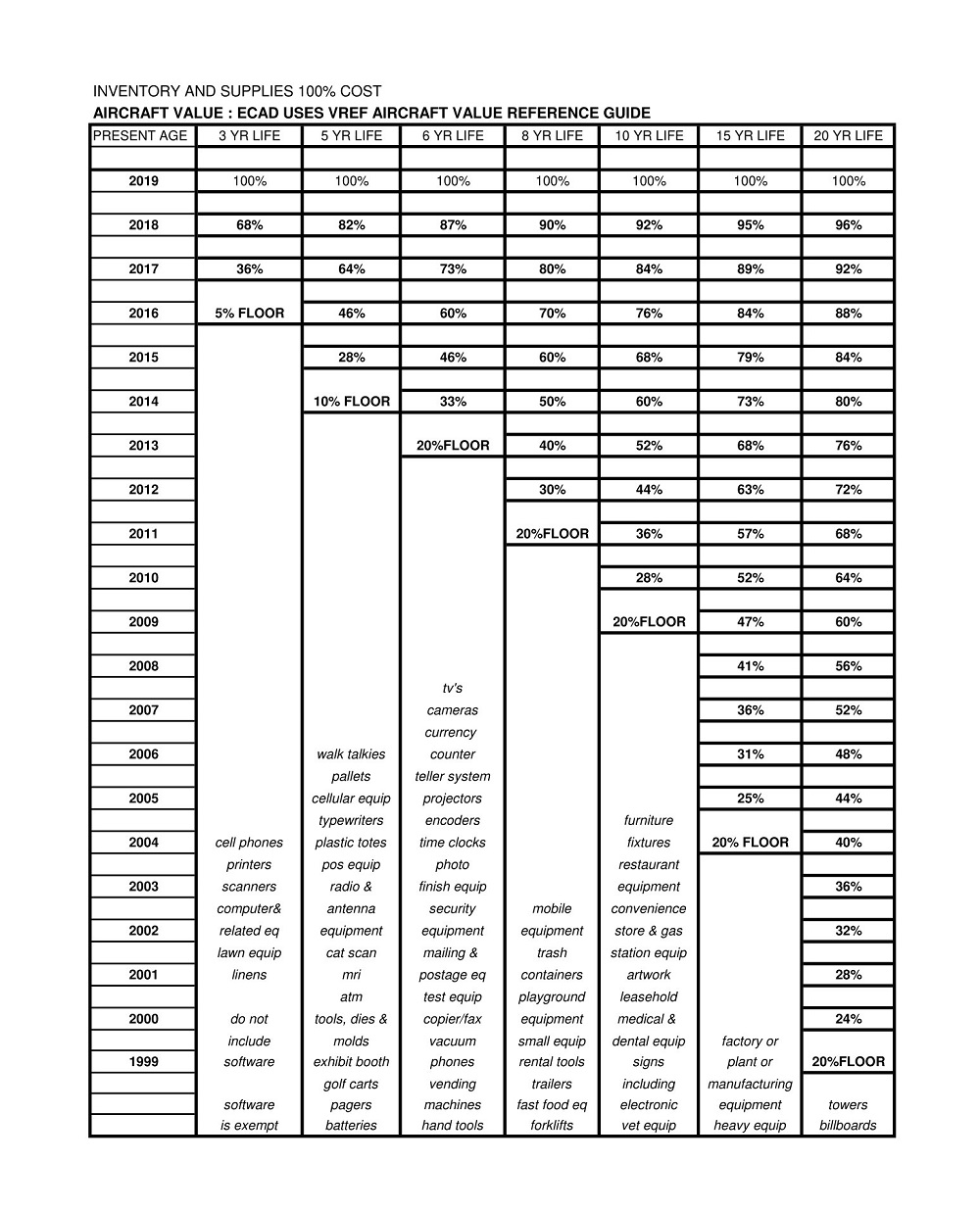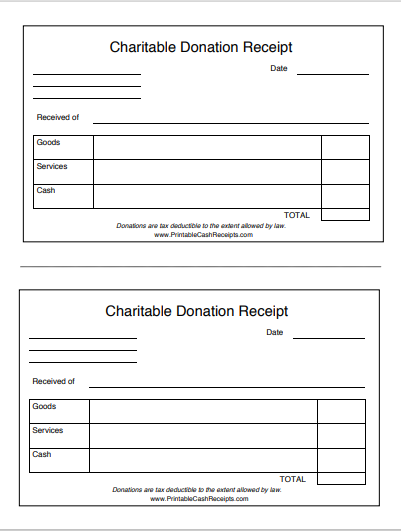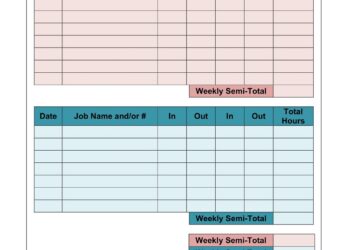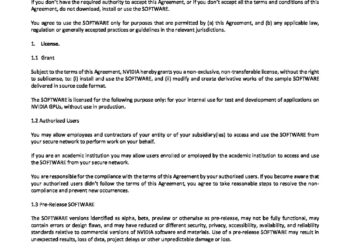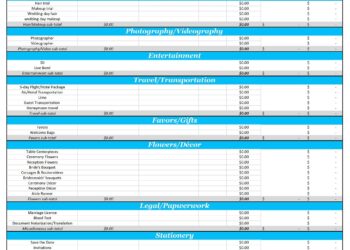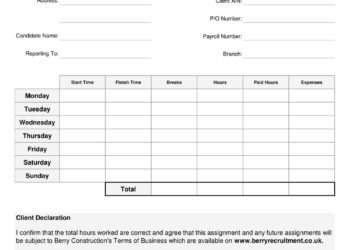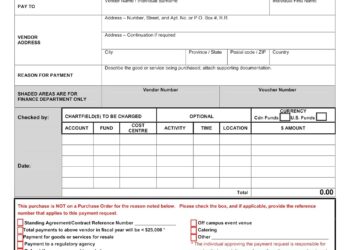Businesses and organizations use a depreciation schedule template, a spreadsheet or document, to monitor and control the asset’s depreciation over time. The practice of spreading out the cost of a tangible item over the course of its useful life is called depreciation. To account for the asset’s declining value with age and use, this allocation is required for accounting and tax purposes. For organizations to stay compliant with accounting and tax laws, plan for asset replacements, and keep accurate financial records, they are essential. Spreadsheet programs such as Microsoft Excel or specialized accounting software can be used to generate them, facilitating quicker management and updating when assets change or age. In this article, you’ll find a collection of free Simple Depreciation Schedule Templates & Samples in PDF, Word, and Excel format to help you make your document effective.
Download Free Simple Depreciation Schedule Templates
Basic Depreciation Calculator Template |
Blank Depreciation Schedule Worksheet |
Business Depreciation Schedule Template |
Capital Asset Depreciation Schedule Template |
Commercial Property Depreciation Schedule |
Depreciation Damage Schedule Template |
Depreciation Schedule Application Template |
Depreciation Schedule by Nonprofit Accounting |
Depreciation Schedule Report Template |
Depreciation Schedule Template Excel |
Fixed Asset and Depreciation Schedule |
Fixed Asset Record With Depreciation |
Fixed Assets Depreciation Schedule Template |
Non Profit Depreciation Schedule Template |
Personal Property Depreciation Schedule |
Revenue Depreciation Schedule Template |
Sample Depreciation Schedule Template |
Simple Depreciation Schedule Template |
What is the Depreciation Schedule?
If you possess assets such as vehicles, machinery, or buildings, a depreciation plan functions similarly to a road map for your finances. It’s a strategy that illustrates how your belongings lose value over time. Consider it a gentle reminder that as things age, they lose their brilliance and worth much like your favorite device. It’s all shiny and new when you buy anything expensive, like a brand-new computer for your company, isn’t it? However, with time, it begins to deteriorate and loses value as well. The depreciation schedule is used in this situation. The schedule outlines how much of your company’s annual revenue can be deducted to cover the depreciation of your assets. Being truthful with the tax man is only one aspect of this; another is prudent financial planning. It assists you in ensuring that your company’s budget remains on course and that you are prepared for future costs associated with maintaining or replacing your equipment.
How do you calculate the Depreciation Schedule?
A depreciation schedule is a table used for accounting and tax purposes that shows how an asset’s cost is allocated over its useful life. Depreciation can be calculated using a variety of techniques, the most popular ones being units of output, falling balance, and straight-line depreciation. Using each of these techniques, you can compute a depreciation schedule as follows:
Straight-Line Depreciation:
Using straight-line depreciation, the asset’s cost is dispersed evenly across its useful life. The straight-line depreciation formula is as follows:
Depreciation expense each year = (Cost of Asset – Salvage Value) / Useful Life. The annual depreciation expense can be calculated by dividing the depreciable cost (Cost of the Asset – Salvage Value) by the useful life in order to generate a straight-line depreciation schedule. The new book value is then calculated by deducting this annual depreciation from the book value of the preceding period. As an illustration, let’s assume you have a $10,000 machine with a $2,000 salvage value and a five-year anticipated usable life.
In a year,
Annual depreciation expense = ($10,000 – $2,000) / 5=$1,600
After one year, book value = $10,000 – $1,600 = $8,400
Continue this process for each year to create the depreciation schedule.
Declining Balance Depreciation:
An expedited technique known as declining balance depreciation accelerates the asset’s annual depreciation by a certain percentage. The falling balance depreciation formula is as follows:
Annual Depreciation Expense = (Book Value at the beginning of the year) x (Depreciation Rate)
Depreciation Rate = 2 / Useful Life
The book value at the beginning of each year is the previous year’s book value or the initial cost in the first year. For example, Using the same machine with a cost of $10,000, salvage value of $2,000, and a useful life of 5 years:
For 1 year;
Depreciation Rate = 2 / 5 = 40%
Annual Depreciation Expense = $10,000 x 40% = $4,000
Book Value at the end of Year 1 = $10,000 – $4,000 = $6,000
Continue this process for each year.
Units of production depreciation:
This method is used when an asset’s usage varies from year to year.
The formula is:
Annual Depreciation Expense = (Cost of the Asset – Salvage Value) x (Units Produced in the Year / Total Expected Units)
You will calculate the depreciation expense for each year based on the actual production or usage.
Benefits of Depreciation Schedule Templates
Businesses and people who own assets can benefit greatly from using a depreciation schedule arrangement, particularly if they wish to account for the assets’ gradual decline in value appropriately. It aids in precisely determining an asset’s current worth. Taxes, financial reporting, and making well-informed decisions about when to upgrade or replace assets all depend on this. Companies can compute tax deductions based on depreciation expense by using depreciation schedules. As a result, there may be a decrease in taxable income and corresponding tax obligations. It makes it possible to plan more effectively financially by giving a clear picture of when assets will need to be improved or replaced. It facilitates capital expenditure budgeting. Businesses are required to account for depreciation under a number of accounting standards and tax rules. It guarantees that you are adhering to these rules.
By keeping track of an asset’s initial cost and cumulative depreciation, it helps in asset management. Decisions on asset disposal, maintenance scheduling, and insurance may all benefit from having this knowledge. Giving stakeholders and investors accurate depreciation information helps boost a company’s credibility. It proves that the business is handling its resources and money sensibly. Lenders frequently demand correct financial statements when a borrower requests funding or a loan. By increasing the accuracy of these assertions, depreciation schedules may facilitate the acquisition of finance. The timetable offers information to help with decision-making regarding asset disposal or replacement. It can assist you in figuring out when an asset has to be replaced since it has reached the end of its useful life. Maintaining a depreciation schedule facilitates asset tracking by making asset location, evaluation, and upkeep simpler. This is especially crucial for businesses that have a lot of assets. By offering an organized structure for entering asset data, using a template helps you save time. It’s not necessary to start from the beginning with the format creation, which can take time.
Types of Depreciation Schedule Templates
To track and compute the depreciation of their assets over time, individuals and corporations can both benefit from using a depreciation schedule layout. Depreciation schedules come in a variety of forms, each intended to meet certain accounting and tax requirements. Typical forms of it include the following:
- Schedule of Straight-Line Depreciation: This template is popular and easy to use. It makes an asset’s cost equally distributed over its expected useful life, making computation and comprehension simple.
- Declining Balance Depreciation Schedule: This method is frequently applied to assets that lose value quickly and permits larger depreciation charges in the early years of an asset’s life.
- Dual Declining Equilibrium Depreciation Schedule: Compared to the diminishing balance approach, this template expedites depreciation even further. For assets with a high initial depreciation rate, it is helpful.
- Units of Production Depreciation Schedule: This schedule is appropriate for assets, such as machinery or cars, whose depreciation is directly tied to their use. Depreciation is computed by multiplying the number of units produced by the miles driven.
- Total of the years’ numbers Schedule of Depreciation: A combination of the straight-line and declining balance approaches is used in this template. It permits a higher degree of depreciation in the initial years, progressively lowering it over time.
- MACRS depreciation schedule: This is a particular schedule used for US tax purposes. The Modified Accelerated Cost Recovery System is utilized in order to calculate depreciation for tax deduction purposes.
- Custom Depreciation Schedule: Occasionally, companies must follow particular rules or have special depreciation needs. In these situations, they might design a unique depreciation plan to suit their requirements.
- Depreciation Forecasting Schedule: This aids in forecasting future depreciation costs, which is beneficial for financial planning and budgeting.
How to use a Depreciation Schedule Template
Tracking the value of an asset as it decreases over time can be made simple by using a template. Here’s a quick how-to for making the most of it:
- Downloading a template is the first step. Usually, it will feature fields for the details of the assets. Enter the asset’s name, purchase price, date of purchase, and any other pertinent data.
- Select the depreciation technique that you wish to apply. Straight-line, falling balance, and double-declining balance are examples of common techniques. It might provide choices for various approaches.
- Find out the asset’s useful life, or the approximate time that it will be beneficial to your company. Certain techniques of depreciation will require this.
- If relevant, indicate the asset’s anticipated salvage value. The asset’s projected value at the end of its useful life is known as the salvage value.
- The asset’s annual depreciation will be automatically calculated by the template using the method, salvage value, and usable life that you have specified. Usually, one completes this every year.
- Look at the annual depreciation figures for every year that the asset is in use. The asset’s declining worth over time is seen.
- There is a column for cumulative depreciation in this template. This represents the asset’s entire depreciation up to that point in time. It facilitates keeping track of the asset’s depreciation over time.
- Remember that there may be tax ramifications for depreciation. For advice on maximizing potential tax benefits and making sure you’re utilizing the template correctly for tax reporting, speak with your financial advisor or accountant.
- A useful tool for budgeting and financial planning is the depreciation schedule. It assists you in projecting future costs associated with asset replacement or upkeep.
How to download the free Depreciation Schedule Templates in PDF
For free download select a template that fits your needs. Here are clearly offered as PDF downloads. Click on the link or button provided to download. The website asks you to enter your email or complete a short survey before allowing you to download. Be careful about making sure the source is trustworthy. If it is not in PDF format but in a different format (eg, Word or Excel), you can save it as a PDF by using a virtual PDF printer or converter. Open the template using the respective software (for example, Microsoft Word or Excel). Go to “File” and then “Save As.” Select PDF format as output and save the file. After downloading the template, review it to make sure it meets your needs. If any changes are required, you can do so using the appropriate software.
How to download the free Depreciation Schedule Templates in Word File
When you find a template you like, click it to open the template page. Find a download button or link to download the template. Click the download link, and a file dialog box will appear. Select a location on your computer where you want to save the time card template and click “Save” or “Download.” It can be downloaded to your computer in Word format (usually with a .docx extension). Navigate to the location where you saved the file and open it using Microsoft Word or a compatible word processing software. Customize the template as needed by filling in relevant information. Save your customized template to your computer for future use.
Conclusion
In summary, these templates are incredibly helpful tools for businesses of all sizes. These simple yet effective documents offer an organized and systematic way to account for asset depreciation over time. By using these templates, businesses may make informed decisions, guarantee compliance with accounting standards, and enhance their financial management. Having it on hand can help businesses of any size, from startups to well-established companies, track and document asset depreciation more easily. This helps you maintain accurate financial records and provides you with a clear picture of the worth of your item as it ages. Essentially, they are easily navigable tools that make the sometimes difficult and time-consuming process of keeping track of asset depreciation simpler. They provide a complete package that encourages financial accountability and transparency, facilitating improved financial planning and decision-making. Thus, if you want to improve the financial administration of your company, think about adding a depreciation schedule template to your accounting procedures.
Reference Link


